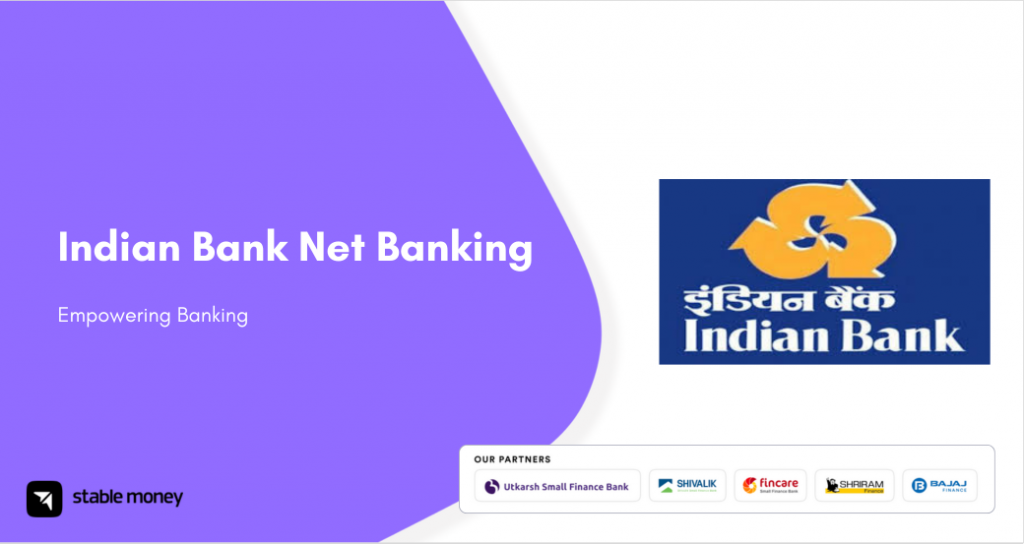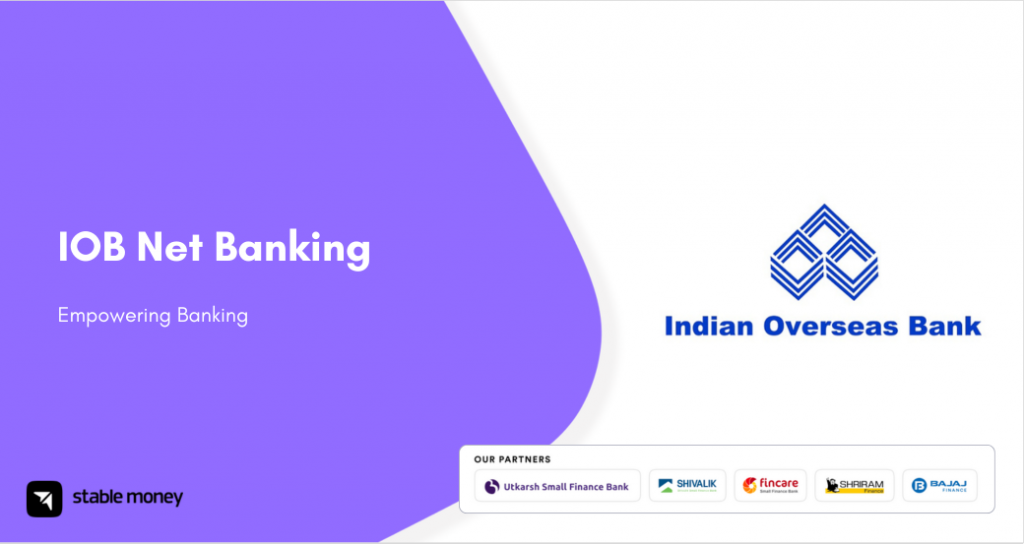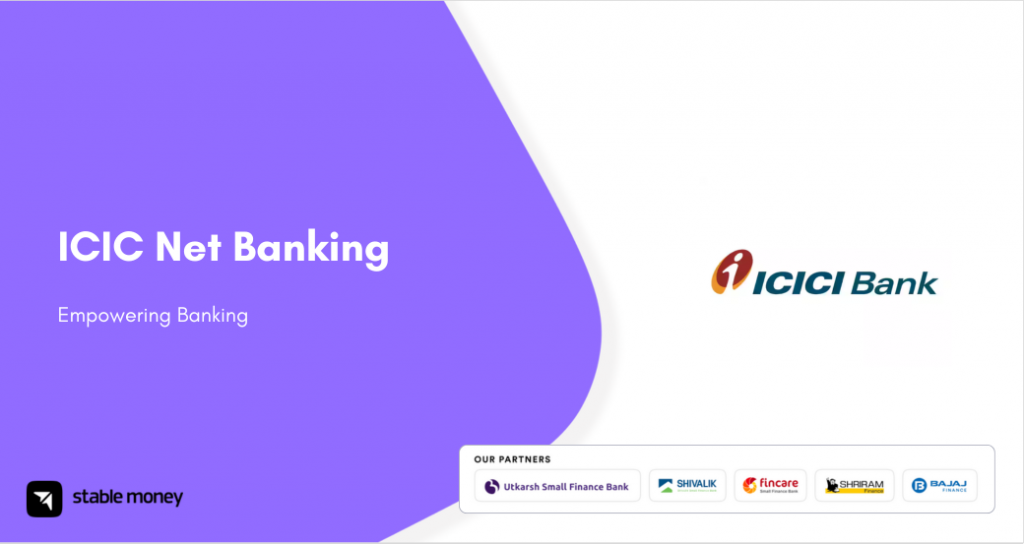
Bank Founded in 1907, Indian Bank is a public sector bank in India with its main office located in Chennai. It serves over 100 million customers with 4,929 ATMs and cash deposit machines divided throughout 5,814 locations and 41,645 employees.. As of FY 24, the bank’s total business has reached ₹12.23 Lakh crore, The bank has received certification that its security procedures and information systems adhere to ISO27001:2013. It has foreign currency banking facilities in Jaffna and Colombo and international branches in Singapore and Colombo.
What is Indian Bank Net Banking?
Indian Bank All account holders are able to perform their banking transactions and activities online thanks to net banking services. A debit/credit card application, bill payments, internet transactions, and many more capabilities are available to users.
Features offered by Indian Bank Net banking
The following are the salient features of Indian Bank’s online banking services:
- Users of Indian Bank’s net banking services can transfer money using the RTGS, IMPS, or NEFT processes from their Indian Bank accounts to other third-party accounts.
- Account owners have internet access to examine and change their account details.
- Account holders can quickly apply for an RD or FD using Internet banking and carry out online transactions such as premature withdrawals.
- Users can also check the status of their chequebook online and monitor their bank account activity and balance.
- Account users can make online reservations for bus, rail, and airline tickets via the net banking services.
- Customers can use the Indian Bank online bill payment service to pay their credit card and utility payments.
What is the Indian Bank Net Banking Registration Process?
- Step 1: Open the Internet banking user interface for Indian Bank.
- Step 2: Choose the option captioned “Register Online.”
- Step 3: Type in the phone number linked to the account as well as the account number. The cellphone number has to come before the country code, which is 91 for Indian consumers. Next, select “Submit.”
- Step 4:User will receive an OTP at that phone number.. Fill in the required field with this OTP.
- Step 5: Fill up the fields requesting account information, DOB, registered email address, etc. when the OTP has been validated.
- Step 6: Select the facility type after submitting these details. Clients can choose the features they need, such as the ability to view solely, to view and transact, and so on.
- Step 7: Next, set up the login password for the net banking account.
- Step 8: Enter the answers to any two of the accessible secret questions. For future use, keep in mind these queries and their responses.
- Step 9: Next, choose on the kind of activation. Users can use an ATM card or Indian Bank branches to activate their netbanking accounts.
- Step 10: Download and complete the form, then turn it into the branch closest to you to activate your account through a branch.
- Step 11: Accept the terms and conditions and accurately enter the necessary card information to activate the account using an ATM card.
- Step 12: A notice indicating that the net banking account has been successfully activated will show on the screen after the bank has verified all the information.
How to Activate Indian Bank Net Banking?
- Go to the Official Website: Visit Indian Bank’s official website.
- Find the Net Banking area: On the homepage of the website, look for the area related to net banking or online banking. The name “Internet Banking” or a similar one may be attached to it.
- Registration: Select the option to register online or as a new user.
- Provide Information: You will be asked to provide information about yourself, including your date of birth, registered mobile number, account number, and CIF number (Customer Information File).
- Establish Login Credentials: In order to access your net banking account, you will need to establish a username and password. Make sure your password is secure and robust.
- Authentication: Using an OTP (One Time Password) issued to your registered email address or mobile number, you may need to authenticate your registration, depending on the bank’s policies.
- Activation: Your net banking account have to be activated after you’ve finished the registration and authentication procedures. It can take some time for you to receive an email or letter from the bank confirming.
Steps to login Indian Bank Net Banking
You can log in to your online banking account by doing the following steps:
- Step:1 Visit the Indian Bank e-banking official website
- Step:2 Find the “Personal Banking” option, then click on it.
- Step: 3 Select “Internet Banking Login” from the Personal Banking page. The login page will be displayed to the user.
- Step: 4 Enter the User ID that the bank sent you. Make sure you enter your User ID exactly in the assigned field.
- Step: 5 Answer the security question and input your login password. To continue, click the
- Step: 6 “Submit” button.
What is Indian Bank Corporate Net Banking?
The financial needs of corporations and enterprises are met by Indian bank Corporate Banking. Corporate loans, trade finance, working capital financing, cash management, treasury services, and investment banking solutions are just a few of the services it provides. Through individualized support, advanced offerings, and strong digital channels, Indian bank Corporate Banking helps companies effectively manage their cash, maximize liquidity, and meet their growth goals.
How to log in to Indian Bank Corporate Net Banking?
- Step:1 Login to Indian Bank corporate account
- Step:2 Users of Indian Bank Corporate Banking can access their online banking portal by following these steps:
- Step:3 Click the “Login” button after visiting the Indian Bank e-banking website0
- Step: 4 Navigate to the Corporate Net Banking area of Indian Bank.
- Step: 5 Put in your Captcha, password, and corporate user ID. To enter the net banking portal, Step: 6 click the “Login” button.
How to Send Money using Indian Bank Net Banking?
1. Include Recipient
- Open your online account at Indian Bank and log in.
- Click the “Fund Transfer” button.
- Next, select “Add Payee” for an IMPS fund transfer from the same bank or “Add Payee” from a bank other than Indian Bank.
- Enter the beneficiary’s information, including the IFSC code, bank account number, and account name.
- After registering your mobile number and all the details are complete, click “Confirm”.
- Input the digits to approve a new beneficiary.
- The notice that you have added a new payee will then be sent to you by the bank. If not, give the bank a call.
2. IMPS Transmission
- The bank will often confirm the payee in less than 30 minutes. After that is finished, select “Fund transfer” once more.
- Decide to transmit funds using IMPS.
- Select the option “IMPS using MMID” or “IMPS using IFSC code”.
- Input the desired transfer amount.
- Press the “confirm” button. If requested, enter the OTP or your debit card’s selected grid digits.
How to Change Password in Indian Bank Net Banking?
Anytime, users can reset or modify their net banking password by following the instructions listed below:
- Step 1: Visit https://www.netbanking.indianbank.in/jsp/startIB.jsp to access Indian Bank online banking.
- Step 2: On the following page, select “Login to Net Banking.” After entering your user ID, click “Continue.”
- Step 3: On the following page, select “Forgot Login Password.”
- Step 4: The screen will show a pop-up window. Click “Next” to proceed.
- Step 5: Type in your country, mobile number, date of birth, bank account number, username, and CAPTCHA code. Press “Submit.”
- Step 6: Enter the OTP that was sent to the phone number you registered.
- Step 7: Enter your new password for net banking. To update their net banking password, users can alternatively utilize the ATM card details or go to an Indian Bank office.
- Step 8: Enter the New Password now to proceed. Next, make the request.
With the new password, the user can now access the online banking portal of Indian Bank.
What is the limit & Charges Associated with Indian Bank Net Banking?
| Transaction Type | Transaction Limit per Day | Transaction Limit per Month | Transaction Charges |
| NEFT Transfer (Within Indian Bank) | ₹2 Lakhs | ₹20 Lakhs | Free |
| NEFT Transfer (Other Banks) | ₹50,000 | ₹10 Lakhs | ₹2.50 + GST |
| RTGS Transfer | ₹20 Lakhs | No Limit | ₹25 + GST |
| IMPS Transfer | ₹2 Lakhs | ₹2 Lakhs | Free |
| Fund Transfer to Own Accounts | No Limit | No Limit | Free |
| Bill Payments | ₹1 Lakh | ₹5 Lakhs | Varies depending on the Biller |
| Mobile Recharge | ₹5,000 | No Limit | Free |
| Investment (Fixed Deposit, Recurring Deposit, etc.) | ₹1 Lakh | No Limit | Free |
| Demat & Trading Account Management | No Limit | No Limit | Varies depending on the transaction type |
| E-commerce Transactions | ₹1 Lakh | No Limit | Varies depending on the merchant |
How to Pay Credit Card Bills via Indian Bank Net Banking?
Follow the given below steps for paying your credit card bills through the PSB online banking Portal:
- Step 1: Enter your Indian net banking credentials and log in successfully.
- Step 2: Click on the ‘Credit Card’ options.
- Step 3: Click on the ‘Credit Card Payment’ option.
Indian Bank Net Banking Customer Care
| Indian Bank Corporate Office | PB No: 5555, 254-260, Avvai Shanmugam Salai, Royapettah, Chennai – 600 014 |
| Corporate Office Phone Number | 044 28134300 |
| National Helpline No | 1800 425 00 000 |
| Mail ID | [email protected] |
Advantages & Disadvantages of Indian Bank Net Banking
1. Advantages
- Convenience: One of Indian Net Banking’s greatest benefits is the convenience it provides. Consumers can save time and effort by accessing their accounts and completing transactions from any location with internet connectivity.
- 24/7 Access: Regardless of bank business hours or holidays, users may access and manage their funds around the clock using Indian Netbanking
- Cost-effective: Compared to more conventional banking methods like going to a branch or using an ATM, many transactions made through net banking are frequently free or have lower rates.
- Numerous Services: From a single interface, the platform offers a vast array of banking services, such as bill payment, investments, loans, account management, fund transfers, and more.
- Security: To safeguard clients’ financial data and transactions, Indian Bank uses strong security protocols. These protocols include two-factor authentication, secure login processes, and encryption, all of which improve overall security.
2. Disadvantages
- Internet Dependency: In order to access their accounts and complete transactions, users of Indian Net Banking need a reliable internet connection. There can be problems with this in places with bad connectivity.
- Technical Problems: Just like any online platform, Indian Net Banking is susceptible to technical problems that could briefly impair services. These problems could include server outages or maintenance issues.
- Cybersecurity Risks: Online banking is vulnerable to cyber threats, including virus attacks, phishing scams, and identity theft, even with security safeguards in place. Consumers must use recommended practices for online security and maintain their vigilance.
- Learning Curve: It may take some time for certain clients, particularly those who are not proficient in technology, to get used to the online banking platform’s capabilities and navigation.
- Restricted Accessibility: Despite the extensive services provided by Indian Net Banking, some banking operations, like cash deposits and withdrawals as well as in-person interactions with bank employees, cannot be completed through online banking and must be completed in person at a branch.
Final Word
Indian bank net banking has transformed how customers manage their finances by providing a secure, convenient, and user-friendly online banking experience. With the increasing popularity of digital banking in India, Indian Bank has invested heavily in developing a robust net banking platform that offers a wide range of services, such as fund transfers, bill payments, online shopping, and more.
FAQs
Indian Bank net banking provides a wide range of services, including fund transfers, bill payments, online shopping, account statements, and more.
To log in to Indian Bank net banking for the first time, you must register by visiting the Indian Bank website and following the registration process. Once registered, you can log in by visiting the Indian Bank net banking portal, selecting “Log in for net banking,” and entering your user ID and password.
The transaction limit for Indian Bank net banking varies depending on the type of transaction and the customer’s account type. For more information on transaction limits, you can contact their local Indian Bank branch or customer support here.
Indian Bank does not charge customers for using its net banking service. However, you should check with your internet service provider for any data charges that may apply.
If you forget your Indian Bank net banking password, you can reset it by visiting the net banking portal, selecting “Forgot Password,” and following the prompts to reset your password.
You can get help with Indian Bank net banking by contacting your local Indian Bank branch or customer support. You can also visit the website for information and support on net banking and other Indian Bank online services.
Shanti lal jain is the CEO of Indian Bank
NO, it is public sector bank having its headquarters in Chennai formed in 1907


